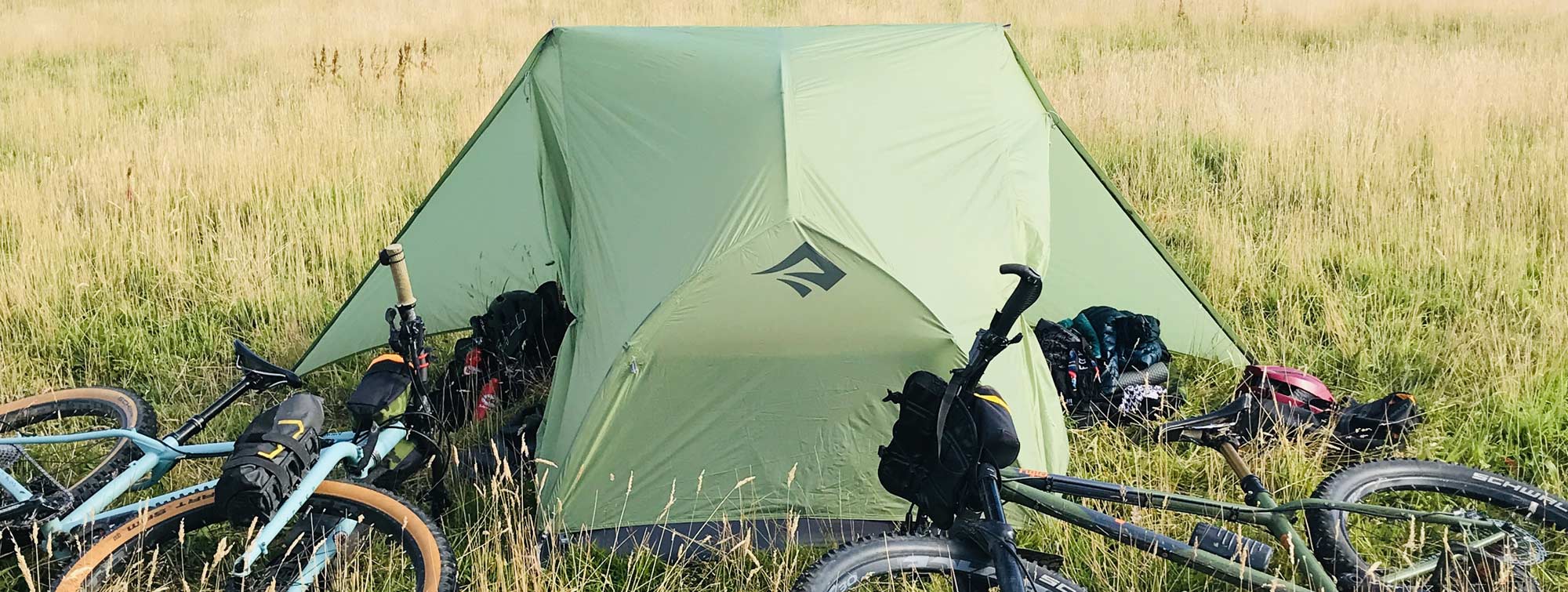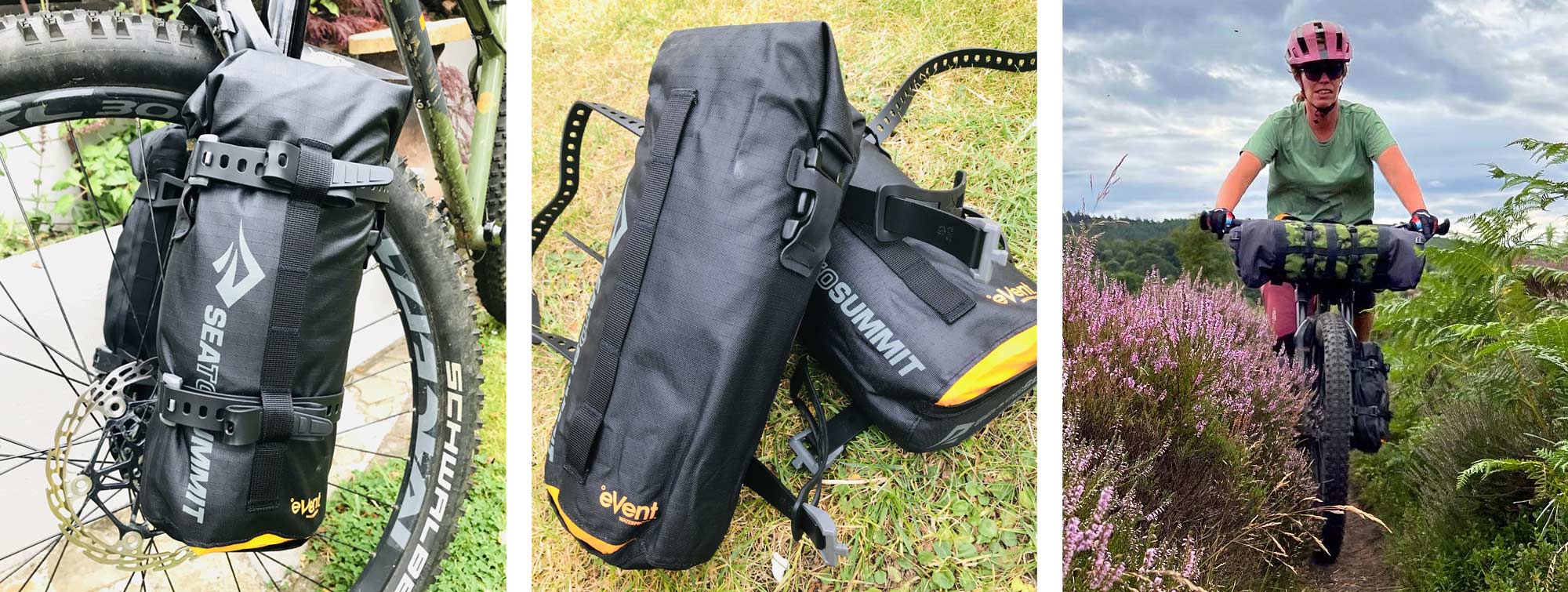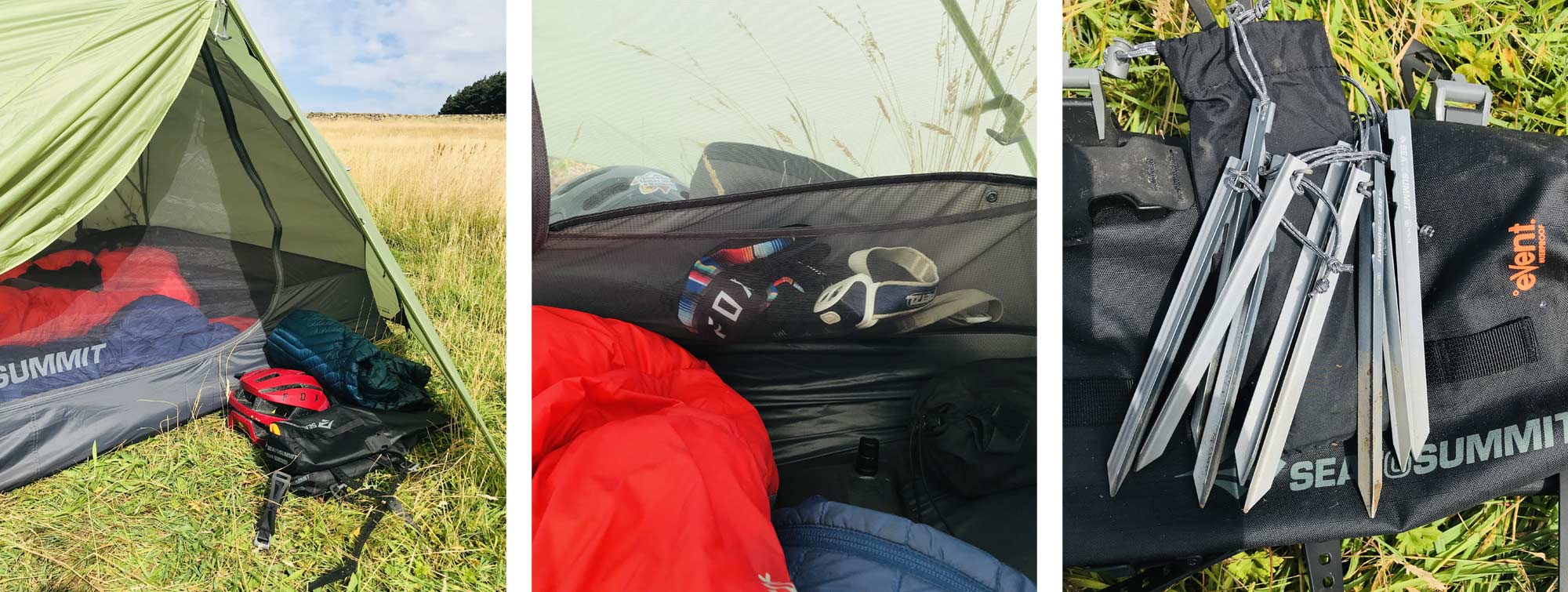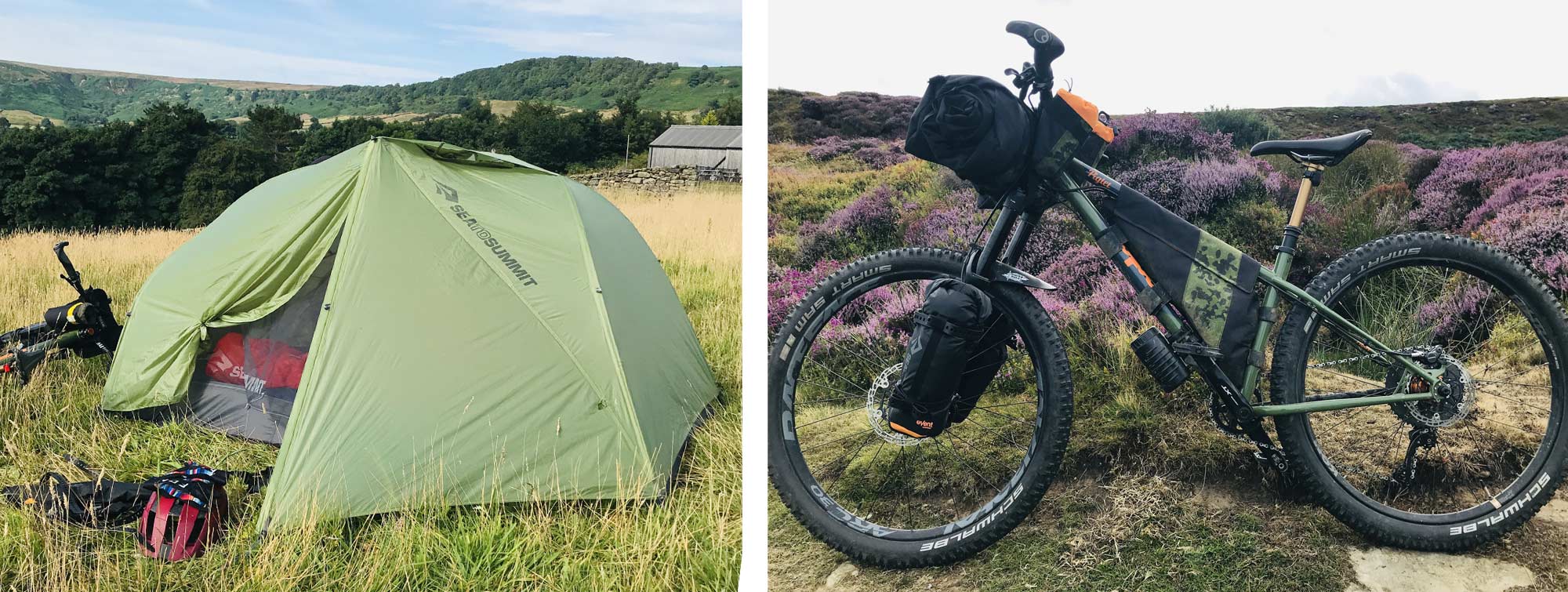Sea to Summit Telos TR2 Bikepacking Tent Review - “I have continued to use this tent on several multiday trips, it never disappoints”
Posted by Lois Fife on Oct 17, 2022

There was a lot of excitement in the office when this tent was first seen on a computer screen. There are many 2 person tents on the market that boast the same qualities that differentiate a bikepacking tent from a regular backpacking tent. The main differences being shorter poles and the ability to attach the tent to the bike. What distinguishes the Sea to Summit Telos TR2 Bikepacking tent from the rest of the pack is the ability to split the pack into two heavy duty waterproof bags that attach directly to the fork legs of the bike, without the requirement of a cradle or cage. To be perfectly honest, I was highly sceptical about how successful this would be, is it just a gimmick? … So, at the first opportunity, I was keen to see for myself how it would perform.
Most of my bike-packing rides are offroad, either on a fully rigid gravel bike, or a mountain bike with front suspension forks, neither of which have braze-ons for attaching cages. So, to-date I’ve not used my forks for storage. The Telos TR2 Bikepacking tent creates this opportunity. The two identical, heavy duty, roll top storage bags each have a rubber reinforced panel that sits snugly against the outer edge of the fork and forms a grippy surface that helps prevent movement or damage to the bike. There are two rubber straps that weave through each bag’s webbing and two rubber brackets that go round the back of the fork. These straps are then pulled tight around the bag and secured in place with a simple but highly effective clip. The straps are quite long, and in this mode, there is quite a bit of excess strap that need to be threaded in to stop it from flailing around. The initial set up of the straps took a bit of figuring out as there are no instructions and getting the straps the right way round and to the ideal position takes a bit of trial and error but becomes second nature after a while. Webbing on the bags has 6 spacing options to thread the straps, this adjustability is ideal to avoid tight spots at the bottom of the fork leg, especially where the disk brake is positioned and the gap between the disk and the fork is minimal, so a higher mounting position is preferable. but once in situ, they fit exceptionally well with reassuring tightness.

My hard tail mountain bike with 150mm suspension forks was the first to put these to the test. After initially doing some twists and turns on the street, on and off kerbs and over some protruding tree routes to see if the setup is worthy of an offroad venture, the signs were all looking good. The bags didn’t move and there was no effect on the handling of the bike. So, a weekend on my local North York Moors trails was hatched - a 60km route with a good mixture of terrain to push the limits of the tent’s portable system included: forest tracks, a stony unsuitable for motors road, rolling moorland bridleways and singletrack with encroaching axel high foliage and even a length of Quakers Causeway, which is a narrow 2 mile stretch of uneven slabs rough enough to loosen your fillings, so if these bags were going to move, then this would be the track to do that. I was absolutely blown away by the performance of these bags on the bike. The only occasion I had to re-adjust the bags was when the thick low foliage kept pushing against the bags as the track was much narrower than the bags and eventually one rotated which generated a rub against the spokes. This was easily identifiable by the audibly click-click sound as the wheel spun round, it didn’t form a risk, didn’t mark the bag and was easily repositioned.
The Telos TR2 bikepacking tent has shorter 30cm long DAC poles, which open to form the same continuous pole configuration as the back-packing version with a tension ridge upswept crossbar that gives good internal volume and height. The inner first pitching is quick and easy, aided by colour matching pole location. Easy to use pole tips connect into the metal foot and adjustable stake out loops makes it easy to find the perfect place to anchor the tent in an awkward location. The inner tent clips to the frame, remembering to have the cross bar in an upturned position which stays in that position using the central H clip. Elastic loops hook onto each end of the tension ridge crossbar and the main body of the inner tent is then clicked in place with plastic clips. The fly sheet is also colour matched on the corners for easy orientation. The tension pole is seated at both ends to the fly sheet, the second side creating tension. The fly sheet can then be extended over the poles, secured with Velcro tabs to prevent movement and add support to the guy points. Then the corners can be secured using the metal claws, that hook around the metal foot and adjusted for tension. The vestibules are then extended and tensioned. 4 reflective guy lines are added using the simple boomerang hook and loops, there are 2 long ones for the head end and 2 shorter ones for the foot end. I like the range of tension adjustability on this tent, as it allows tension to be adjusted evenly throughout a wide range of positions.
Internal space of the main tent is good and although there are some small storage pockets, the loft store is a good addition (sold separately). The pole bag doubles up as an internal lamp. It attached to the roof of the inner tent underneath the cross bar using 2 press-studs located inside both ends of the bag. The reflective band on the bag then defuses the light from a head torch or phone light and is very effective. The vestibules are a good size to keep dirty objects outside, but a few daisy loops for hanging gear would be a good addition.

Repacking takes a bit a practice. I have found it best to put the pegs with the inner tent and the poles with the outer. Take a bit of time to condense the poles to as tight a bundle as possible before inserting them into the pole bag, then wrap them in the outer tent before putting them in one of the fork bags. If the bundle is too big, it will be difficult to insert and secure the roll top closure. After a couple of trips this has become second nature and packing up is a pretty swift process.
This is a good 3 season tent for UK conditions with a mixed fabric and mesh inner. 2500mm HH, 20 Denier floor, and 1200mm HH, 15D fly. It has fully taped seams, so is ready to go. The design has good ventilation to reduce condensation build up, with low level ventilation under the fly and a roof ‘apex’ vent. A footprint is a good addition (sold separately) but I doubt this will fit within the 2 storage bags. This would keep the base of the inner clean and protect it from ground abrasion and impurities that could potentially reduce the life span of the tent – well worth finding a small drybag to store a mucky groundsheet and stash elsewhere on the bike.
This is a very good, well-designed tent. Sea to Summit have worked closely with designer/architect Jake Lah, owner and driving force behind DAC to produce a strong structure. The Telos TR2 bikepacking tent ticks boxes not only for design, but also function and aesthetics. The 2 storage bags will revolutionise the transportability of a tent on suspension bike forks. It is versatile and these bags can be attached in multiple places on a bike. The ‘Fair Share’ way of splitting the load between 2 people is achievable with this compartmentalised split. The robust bags are stealth in colour with subtle logos. The tent blends into its environment with a combination of a soft sage-green outer with grey logos and a grey inner which transitions from dark grey at the floor to light grey above. Sea to Summit remind us that they have strong Australian roots with their use of a boomerang to attach the guy ropes or tie back the doors, this puts a smile on my face each time I use it… I don’t mind a gimmick if it works, and these boomerangs work just fine!
I have continued to use this tent on several multiday trips, and it never disappoints. It too is not a gimmick. It laughs in the face of my initial scepticism which is precisely what I hoped for.


|
||
 |
||
|
Lois Fife |
||
|
Lois is a keen cyclist and is always plotting a route… either for her next trip or looking for a different way to commute to work! She is regularly seen heading for the hills on a packed-up bike, be it for a quick overnight wild camp, or a longer multi-day adventure. She is currently plotting her route to walk the TGO across Scotland. She is a British Cycling level 2 leader and has been involved with MTB Guisborough encouraging the next generation of mountain bikers. Lois joined Ultralight Outdoor Gear in 2021 and is part of the Customer Service Team. She is always keen to get her hands on new kit to try in the field and share her findings on the website. |
||
